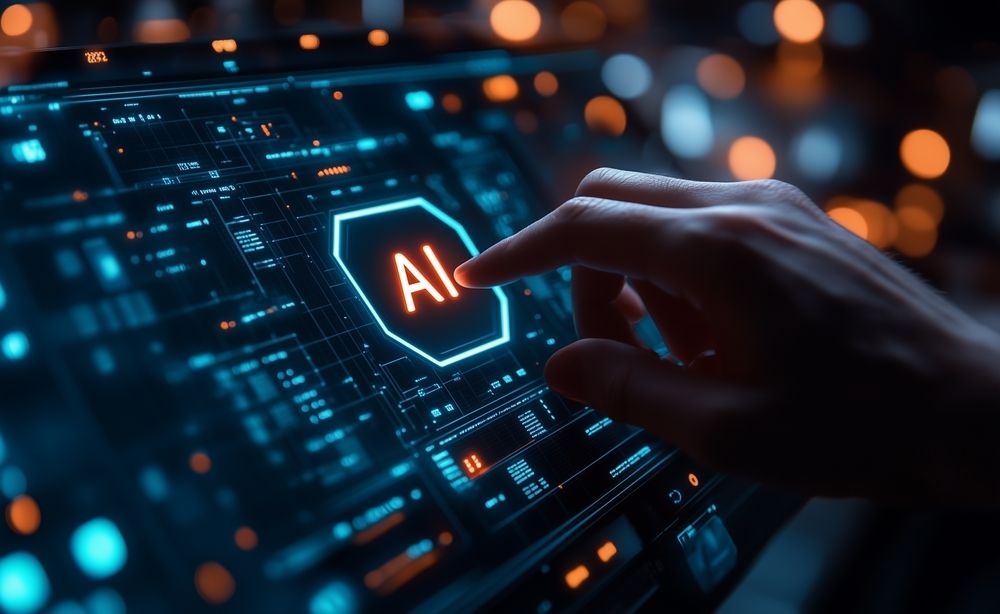Boosting Employee Productivity with AI: How Gen AI Enhances Workplace Efficiency

Navigating AI in the Workplace: The Jagged Frontier of Productivity
Artificial intelligence has become a powerful force in the modern workplace, promising productivity gains while introducing complex challenges. A recent study, conducted in collaboration with Boston Consulting Group and researchers from Harvard Business School, MIT Sloan, The Wharton School, and Warwick Business School, explores AI's impact on worker performance within its "jagged technological frontier."
The Dual Effect of AI on Productivity
The study highlights a critical insight: AI enhances worker performance when operating within its competency boundary but negatively impacts outcomes when used beyond it. Researchers assigned more than 700 consultants to tasks that either aligned with or exceeded AI’s capabilities, revealing distinct productivity shifts.
- Inside the Frontier: Participants using AI for tasks within its strengths (e.g., generating product ideas and marketing content) saw a 38-42.5% performance boost. Lower-skilled workers benefited the most, with a 43% improvement, compared to 17% for highly skilled workers.
- Outside the Frontier: When AI was applied to tasks requiring deep analysis and judgment (e.g., evaluating brand investments and writing executive memos), performance dropped by 13-24 percentage points. Workers tended to rely on AI-generated outputs without critical evaluation, leading to incorrect conclusions.
Understanding the "Jagged Frontier"
The term "jagged frontier" refers to the uneven boundary between tasks AI can handle effectively and those requiring human judgment. While AI excels at structured, data-driven tasks, it struggles with nuanced decision-making, making it crucial for organizations to delineate AI's role clearly.
Lessons for Organizations Integrating AI
To navigate AI’s jagged frontier, organizations must develop thoughtful implementation strategies:
Encourage Cognitive Effort & Expert Judgment
- AI should be treated as an assistant, not a replacement for human reasoning.
- Workers must validate AI-generated content before making decisions.
Optimize AI Workflow Integration
- Employees adopt different AI collaboration styles: some act as centaurs (dividing tasks between AI and human effort), while others behave as cyborgs (fully integrating AI into their workflow).
- Understanding these dynamics can help organizations design better AI-assisted processes.
Redesign Roles and Onboarding
- Workers need structured AI onboarding to learn where AI excels and where it fails.
- Peer trainers should be recognized for helping others adapt to AI-enhanced workflows.
Prioritize AI Interface Design and Accountability
- AI interfaces should highlight areas where AI is less reliable to prevent blind trust in outputs.
- Employees should be trained to justify their decisions without relying solely on AI outputs.
AI’s Expanding Role in Business Transformation
Generative AI, encompasses technology that possesses the ability to be ‘trained’ to tackle inquiries through text or other outputs. Following the introduction of ChatGPT, a popular generative AI tool developed by Microsoft-backed OpenAI, generative AI’s impact on the workplace has become a buzzworthy topic in the corporate landscape. KPMG’s recent survey ascertained insights from C-suite leaders on increasing productivity with generative AI.
The profound implications of generative AI on business operations and the workforce are growing tremendously. KPMG believes that the result betons generative AI’s impact on the workplace in fostering creativity, progress, and organizational success—reshaping workplace efficiency.
Some of the key takeaways from the survey include but are not limited to:
- 72% of respondents said that generative AI can enhance productivity in the workplace.
- 76% recognized that software-related jobs such as IT are probable to witness a positive impact and wide-scale adoption of generative AI in their businesses.
- 62% of participants believed that AI could encourage innovation to guide the development of novel products and services.
- 47% of the respondents expect a decrease in job security with generative AI’s impact on the workplace, while 41% cited concerns about reduced overall development opportunities.
Moving Toward AI Maturity
A survey of employees and executives reveals a disconnect in AI adoption perceptions:
- 94% of employees and 99% of C-suite leaders are aware of AI tools.
- Leaders underestimate AI usage—only 4% believe employees use AI for 30%+ of their work, whereas self-reports show 12% do.
- 47% of employees expect to use AI for 30%+ of their daily tasks within a year, double the estimate of executives.
To accelerate AI maturity, businesses must:
- Invest in AI literacy and workforce adaptation
- Develop responsible AI governance and explainability measures
- Encourage a balanced human-AI collaboration culture
Key Takeaways for AI Integration
To ensure AI enhances productivity while mitigating risks, organizations should:
- Define AI's role carefully within structured and unstructured tasks.
- Train employees to critically evaluate AI outputs to avoid blind reliance.
- Foster a hybrid human-AI collaboration model that balances efficiency and expertise.
Conclusion
AI’s role in the workplace is at a crossroads. While its potential is undeniable, organizations must tread carefully to maximize productivity without diminishing human expertise. By fostering cognitive engagement, redesigning workflows, and building a culture of accountability, businesses can harness AI’s strengths while mitigating its risks—paving the way for a more intelligent, efficient, and innovative workforce.